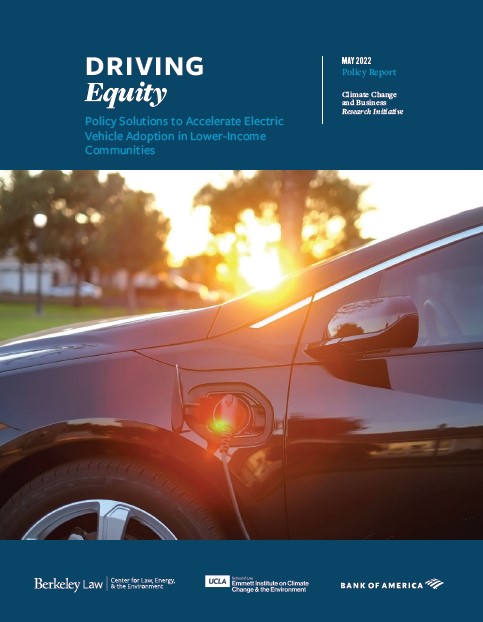May 2022
To achieve state goals of 40 percent greenhouse gas emission reduction (below 1990 levels) by 2030 and carbon neutrality by 2045, California must significantly reduce emissions from transportation, which is the single greatest source of statewide (and national) emissions. In 2020, Governor Newsom issued an executive order calling for a complete phase-out of new fossil fuel vehicle sales by 2035, and in April 2022 the California Air Resources Board proposed an update to its Advanced Clean Cars regulation to achieve that target.
California has made significant progress, recently surpassing 1 million cumulative electric vehicle (EV) sales and representing nearly 40 percent of all EV sales nationwide. Recent state funding plans have directed hundreds of millions of dollars to equitable clean transportation investments, and state programs like the Clean Vehicle Rebate Project and Clean Cars 4 All offer EV purchase rebates specifically for lower- and middle-income Californians.
But, to date, the EV transition has primarily been limited to higher-cost vehicles and higher-income Californians. As our new report, Driving Equity, describes, effectively and equitably phasing out fossil fuel vehicle sales will require access to affordable EVs and robust charging infrastructure for all Californians, and a number of financial and infrastructural barriers stand in the way of that goal.
To address this challenge, CLEE and UCLA Law’s Emmett Institute on Climate Change and the Environment convened state, local, industry, and environmental leaders to develop priority solutions for EV adoption in California’s lower-income communities. These leaders identified policy solutions to overcome those barriers including:
- Increasing existing vehicle rebates to lower upfront purchase prices. Even with vehicle and battery prices broadly declining and robust rebate programs in place, purchase prices are still higher than many lower-income residents can afford and used EVs are hard to locate. Increased purchase incentives for lower-income buyers could help bridge the gap until more models and used vehicles are.
- Creating a subsidized charging payment system. While EV charging costs are generally lower per mile than gasoline refueling, these savings can take many years to accrue. To incentivize the switch and promote installation of chargers in a range of communities, the legislature could create a subsidized card for use at public chargers.
- Funding community-based organizations. Programs like the San Joaquin Clean Vehicle Empowerment Collective have demonstrated the ability of CBOs to accelerate EV adoption in a range of California communities, something the legislature could support through direct funding for similar organizations.
To see the full list of proposed solutions, download the report here.
Watch the Webinar:
Contact Ethan Elkind, Ted Lamm or Katie Segal for more information.